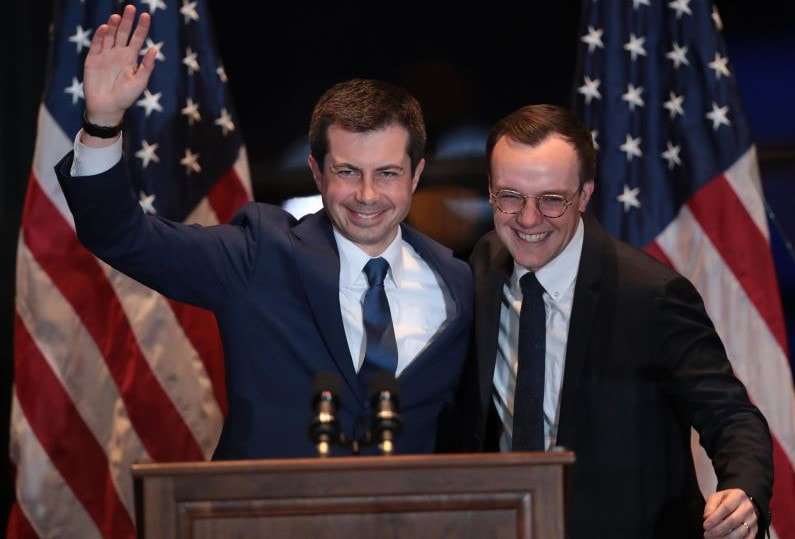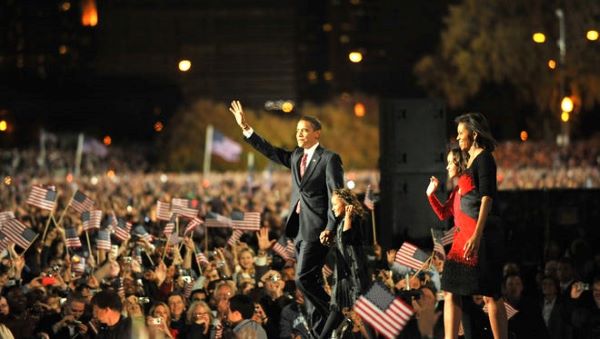|
We sat in front of the tube Sunday night and made that exclamation, watching a politician kiss his husband and then deliver a gracious and hopeful speech.
The love in the room was tangible, following months of campaigning by Mayor Pete in far corners of the United States, where he was treated with respect and affection by wide swaths of the population. In the narrow sense, this was not a triumph, since Buttigieg had just been ignored/rejected by voters in South Carolina, who had other agendas, quite understandable. But Buttigieg knew he had taken his youth and hope and skill to the American public and received votes, delegates, and promise of a future. So, yes, this scene was not something we had thought we would see in a national election, any time soon. In a way, it reminded me of the hope of turning, dare I admit it, 21 in the election year of 1960, and seeing a candidate I thought represented youth and idealism, John F. Kennedy, beating Richard M. Nixon. For anybody believing in equal opportunity, there was pride in that religious barricade coming down, but much more it was the hope of another generation coming along, that would sort things out, or so we hoped. More to the point, Buttigieg’s speech, clearly without prompters or notes, celebrating values like honesty and equality and facts, reminded us of a speech at the Democratic convention in 2004, by a senator, of color. My wife caught it live, and told me about it, and said Barack Obama would be president, and soon, because he could express the hope and ideals of the nation. Four years later, we saw an appealing family, husband and wife and two little girls, walk onto a stage in Grant Park, Chicago, to acknowledge being elected president. “Did you ever think you’d see that?” I can only speak for myself, but the magical sight reflected to my upbringing, the highly “progressive” political values of my family – the adoration for Eleanor Roosevelt and her husband, the records by Marian Anderson and Paul Robeson in our house, and the discussion group of working class people in Queens, intentionally maintained at 50-50, black and white, that sometimes met in my family’s living room. How often do you see family ideals expressed on worldwide television from a jammed lakeside park in Chicago? For all the birther crap being spread about the Obamas, this was a family victory. Now it is a gay couple, Pete and Chasten, married, kissing in front of the world, celebrating the reality that Mayor Pete had been accepted – chosen in primaries and caucuses – particularly by older folks, in a time when younger people are much more comfortable with gender diversity. And then Mayor Pete gave a speech that reminded us of Barack Obama in 2004. Nobody knows what will play out in the coming days and months. I won’t even go into the glaring and dangerous failures of the current president. I only know that Mayor Pete kissed his husband, and gave a great speech, and that made us feel better, if only for the moment. “Did you ever think you’d see that?”
Gen Xer
3/2/2020 12:10:26 pm
I generally respect you as a writer, a thinker and voice of your generation.
bruce
3/2/2020 05:09:20 pm
gen xer
George Vecsey
3/2/2020 03:39:36 pm
Dear Gen Xer: Thank you for the comments, many in line with my thoughts/politics. But I do have some objections:
Bruce
3/3/2020 12:02:24 pm
george( [email protected] )3/2/2020 04:54:40 pm
Randolph
3/6/2020 06:53:50 pm
George,
Ed Martin
3/6/2020 11:38:18 pm
I did not see the moment, but people I know and love, love people of the same sex. As the current meme says in answer to the theoretical question -“Why are they kissing.” “They love each other.” Comments are closed.
|
Categories
All
|











